|
Crustose lichens adhere tightly to their substrate. They cannot be removed without damaging the underlying material. 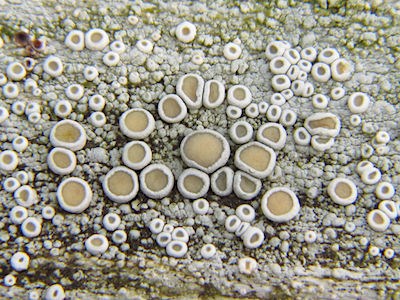
NPS/C. Vecchio Photo The Ochrolechias ("saucer lichens") are crustose species, frequently displaying raised apothecia with lighter colored rims. Chemical testing may be necessary to distinguish them from a similar genus, Lecanora. 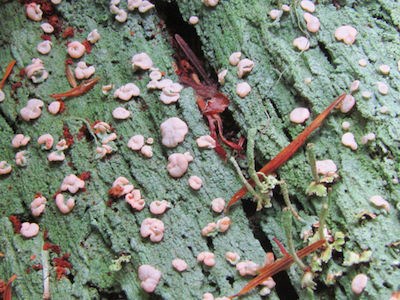
NPS/C. Vecchio Photo Icmadophila ericetorum goes by the common name of "fairy barf." Its thallus is green, and its apothecia are pinkish. 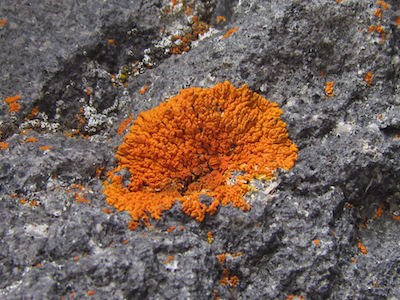
NPS/C. Vecchio Photo Rusavskia elegans ("sunburst lichen") was formerly classified as a Xanthoria. Recent DNA testing showed that it deserved a genus of its own. 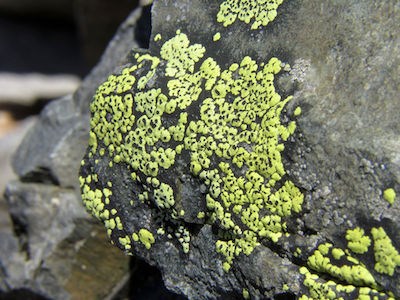
NPS/C. Vecchio Photo The genus Rhizocarpon ("map lichens") is quite diverse. These crustose lichens occur on rock and are commonly seen in the sub-alpine/alpine zones of the park. 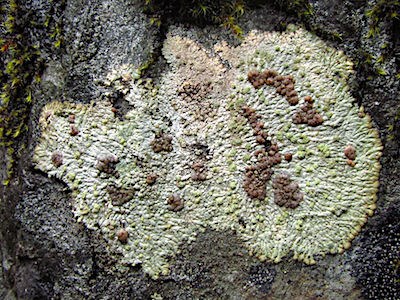
NPS/C. Vecchio Photo Placopsis ("bull's-eye lichen") exhibits a preference for basaltic/andesitic rock. It displays large pinkish-brown apothecia. 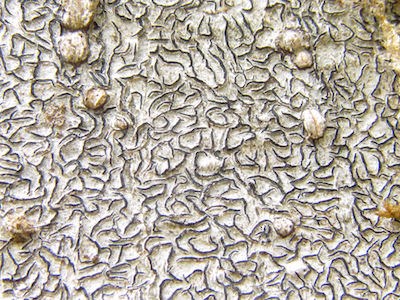
NPS/C. Vecchio Photo Graphis scripta ("script lichen") is elusive because it is so small. The fine black lirellae (specialized apothecia) are never more than 7 mm long. It occurs most commonly on Red Alder in the park. 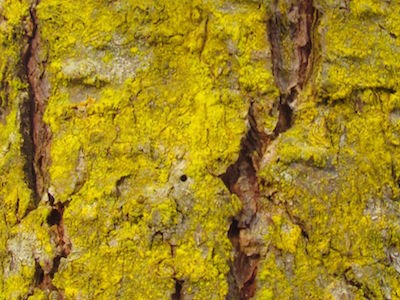
NPS/C. Vecchio Photo The fine crust of Chrysothrix candelaris ("gold-dust lichen") can be found on many species of tree, notably Douglas-fir. 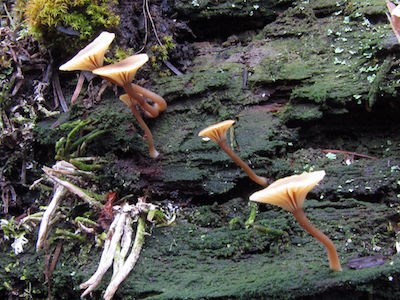
NPS/C. Vecchio Photo Unusual in that it exhibits a mushroom (basidiomycete) as its fruiting body, Lichenomphalia umbellifera's thallus consists of a fine pea-green granules and/or pale green squamules (scales). Return to Lichen Guide |
Last updated: March 17, 2025
